The Masonic Symbology on The Monument's Frieze
The frieze on the Monument was sculpted by Caius Cibber, commissioned by Freemason Sir Christopher Wren, left hidden allegorical & masonic meanings in the carvings.
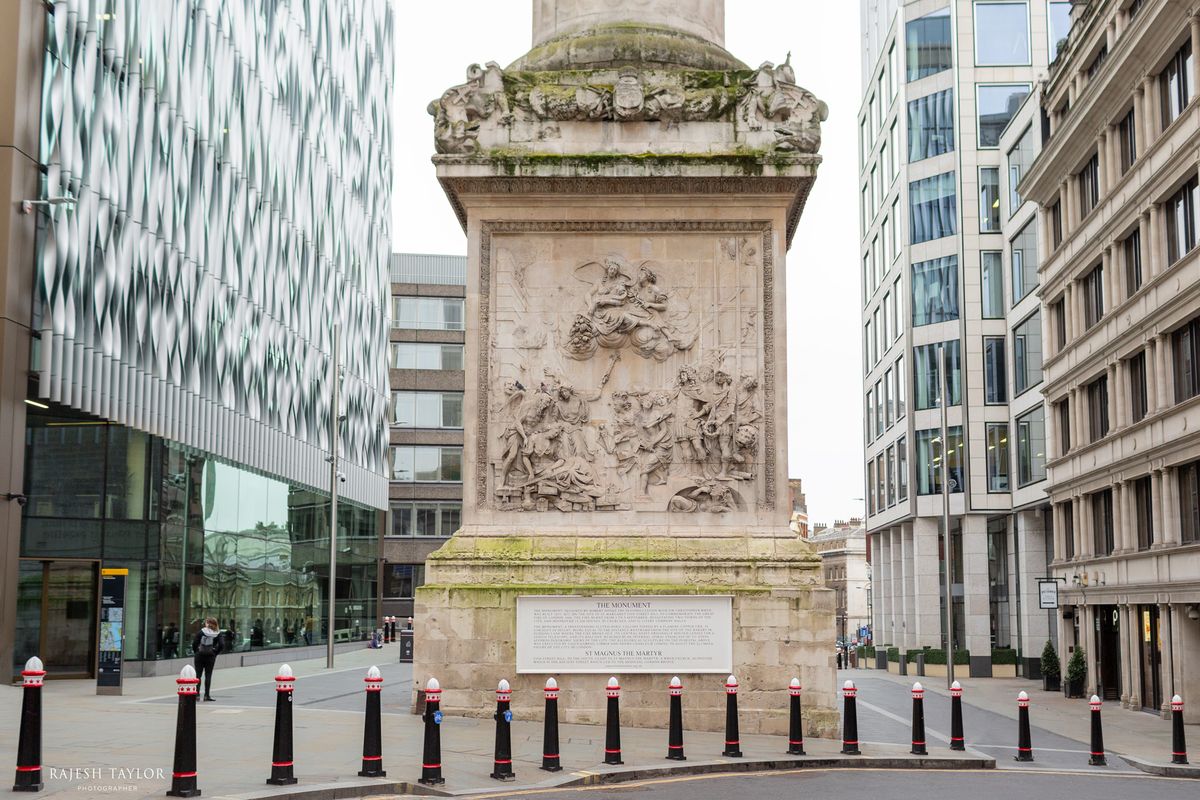
The Monument is a 202 foot high Memorial to the Great Fire of London in 1666.
It stands between Fish Street Hill and Monument Street, in the Ward of Candlewick, one of 25 in the sovereign state. Today, silver painted cast-iron dragons on metal bollards mark the boundaries to the City of London.
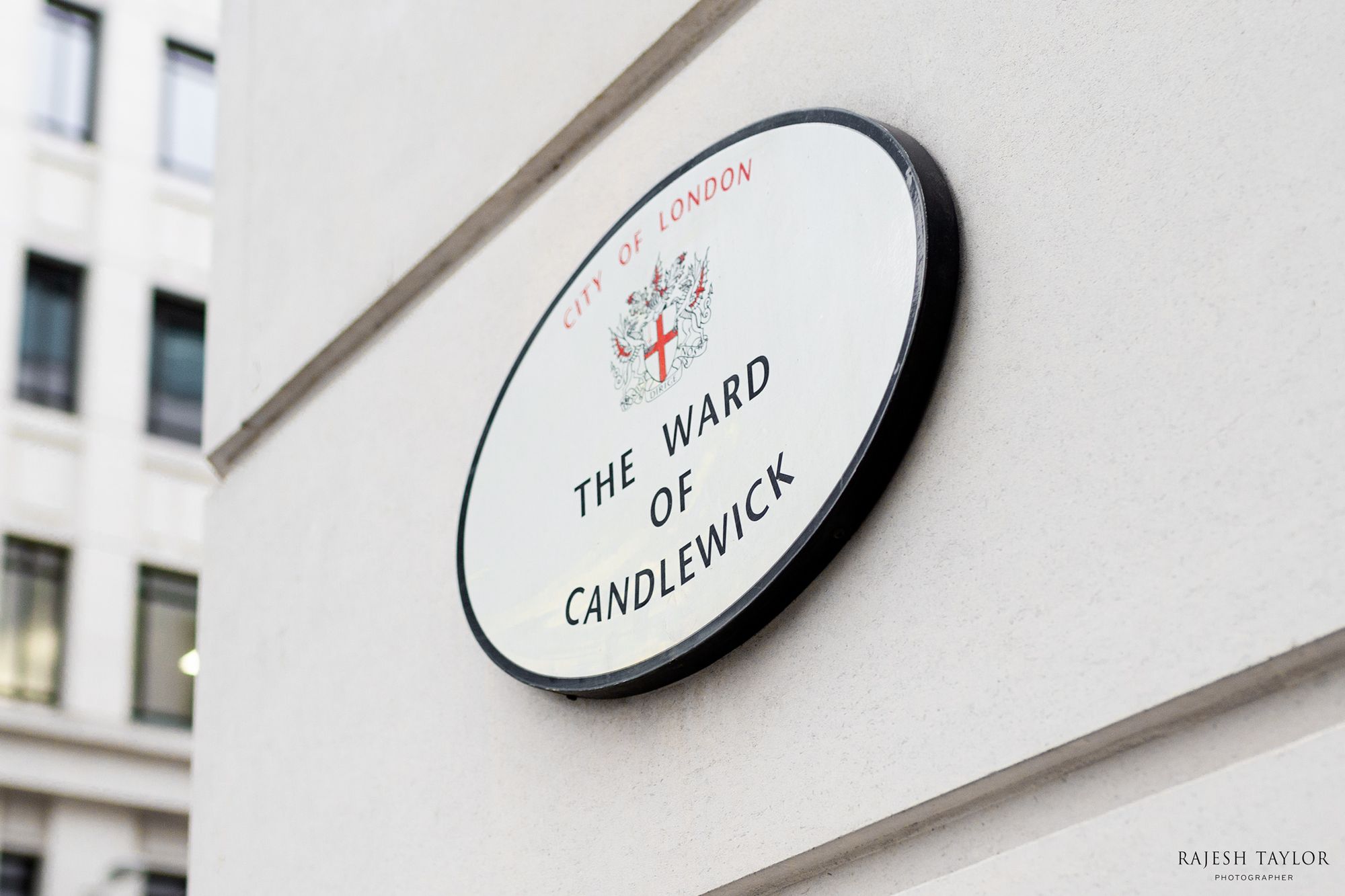
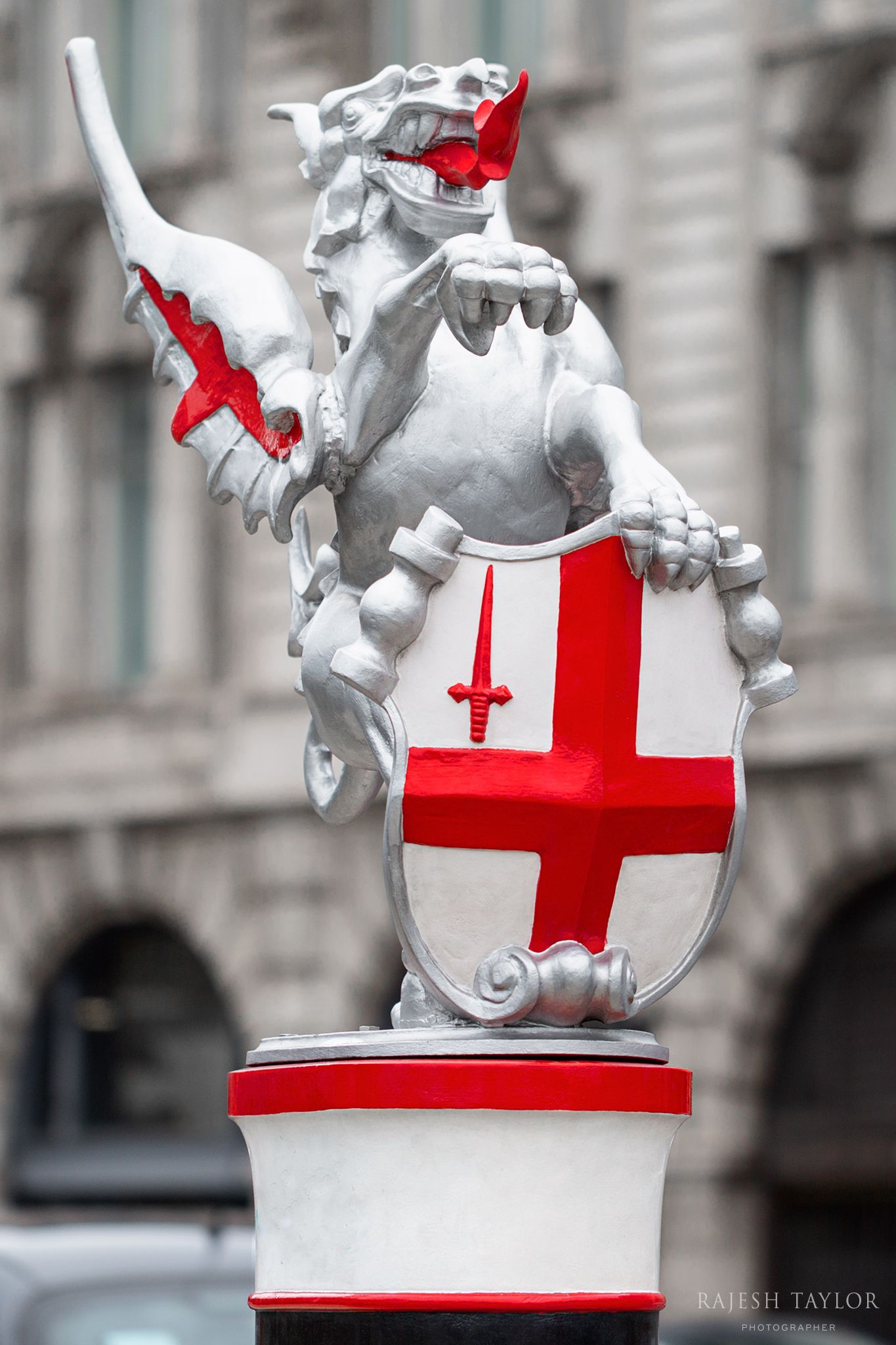
(L) The Ward of Candlewick plaque along Fish Street. (R) Dragon statue mark the boundaries of the City of London: © Rajesh Taylor
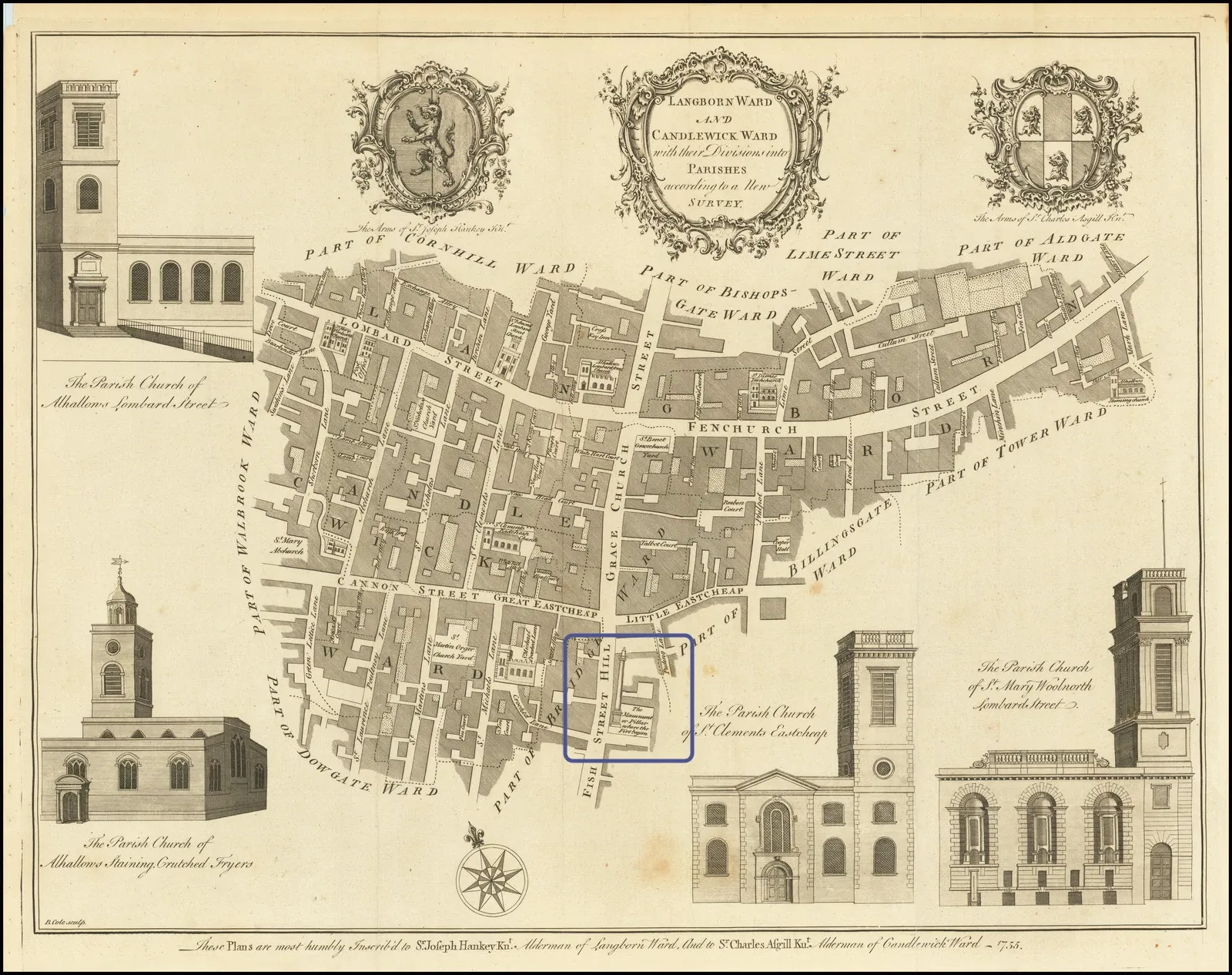
As schoolkids, we were taught the Great Fire began in Thomas Farriners' bakery, the King's Baker no less, on Pudding Lane 2nd September 1666. Mainstream media of the day reported his bakery ovens were not properly extinguished. The heat created sparks, setting alight the wooden bakery and home above.
130,000 city dwellers would be made homeless, with a third of all buildings and churches were destroyed. An artists' depiction below, shows the fire, fanned by a westerly breeze.
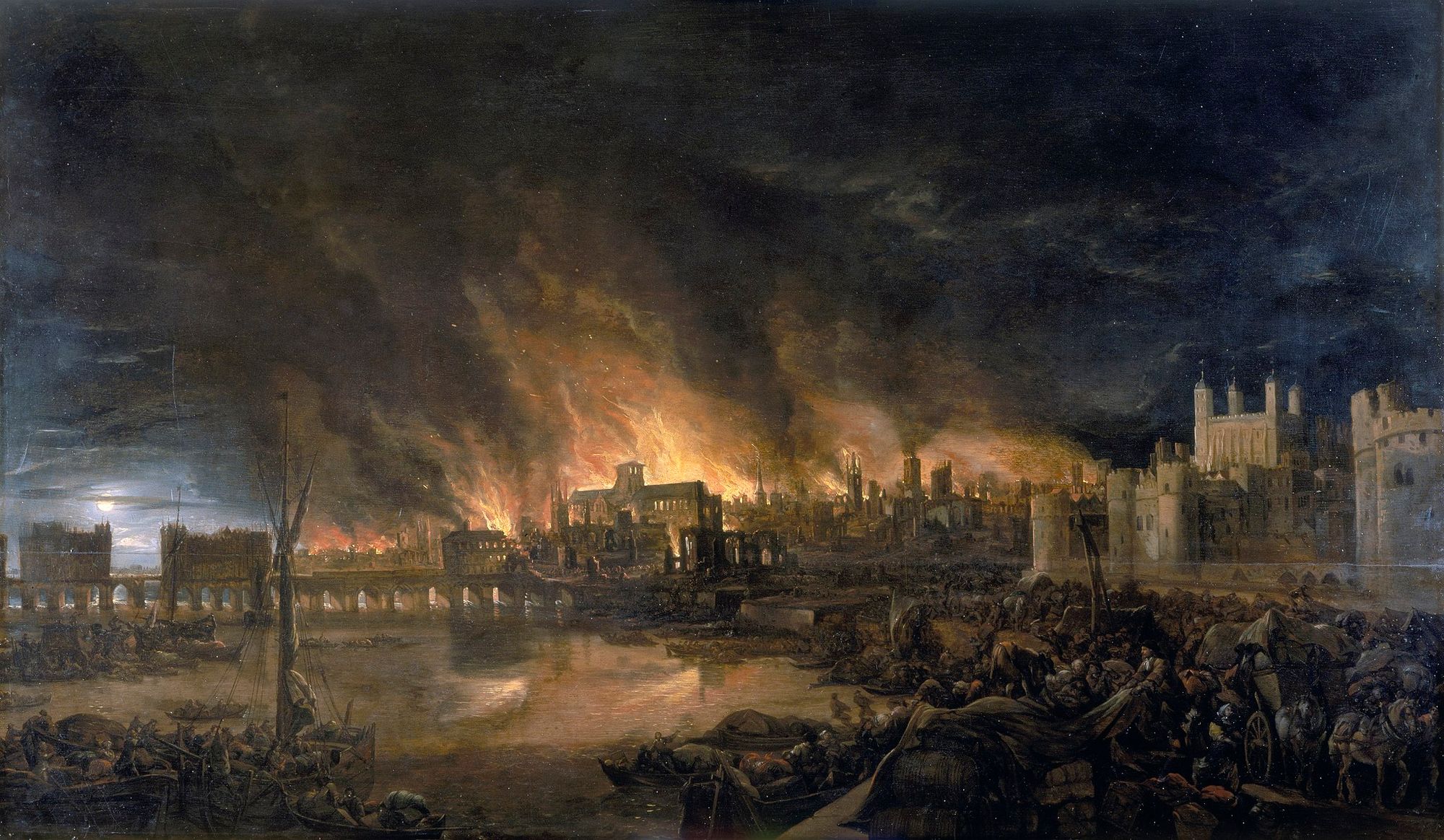
The fire would go as far west as St Paul's Cathedral, which would be re-built (again) by Architect and Master Freemason Sir Christopher Wren.
Sir Christopher Wren's Wonderful Sense of Timing
Wren would be safely away touring France from July 1665, taking in European church architecture. During his absence, London was being ravaged by the Great Plague from May to December 1665, killing 100,000. He arrived in Paris in July 1665, returning to London in March 1666.
He visited the Royal Palaces of Fontainbleau and St.Germain, the Grand Chateaux’s of Chantilly and Liancort. And whilst it was in the course of construction, The Palace of Versailles.
Wren was also allowed to view Italian architect Giovanni Bernini’s drawings used to design the east wing of the Palace of the Louvre, which was nearing completion. On his return, Wren submitted his plans to rebuild the old St.Paul’s Cathedral, which were accepted in principle on 27 August 1666.
But a week later a fire ‘accidentally’ broke out in a baker’s shop in Pudding Lane.
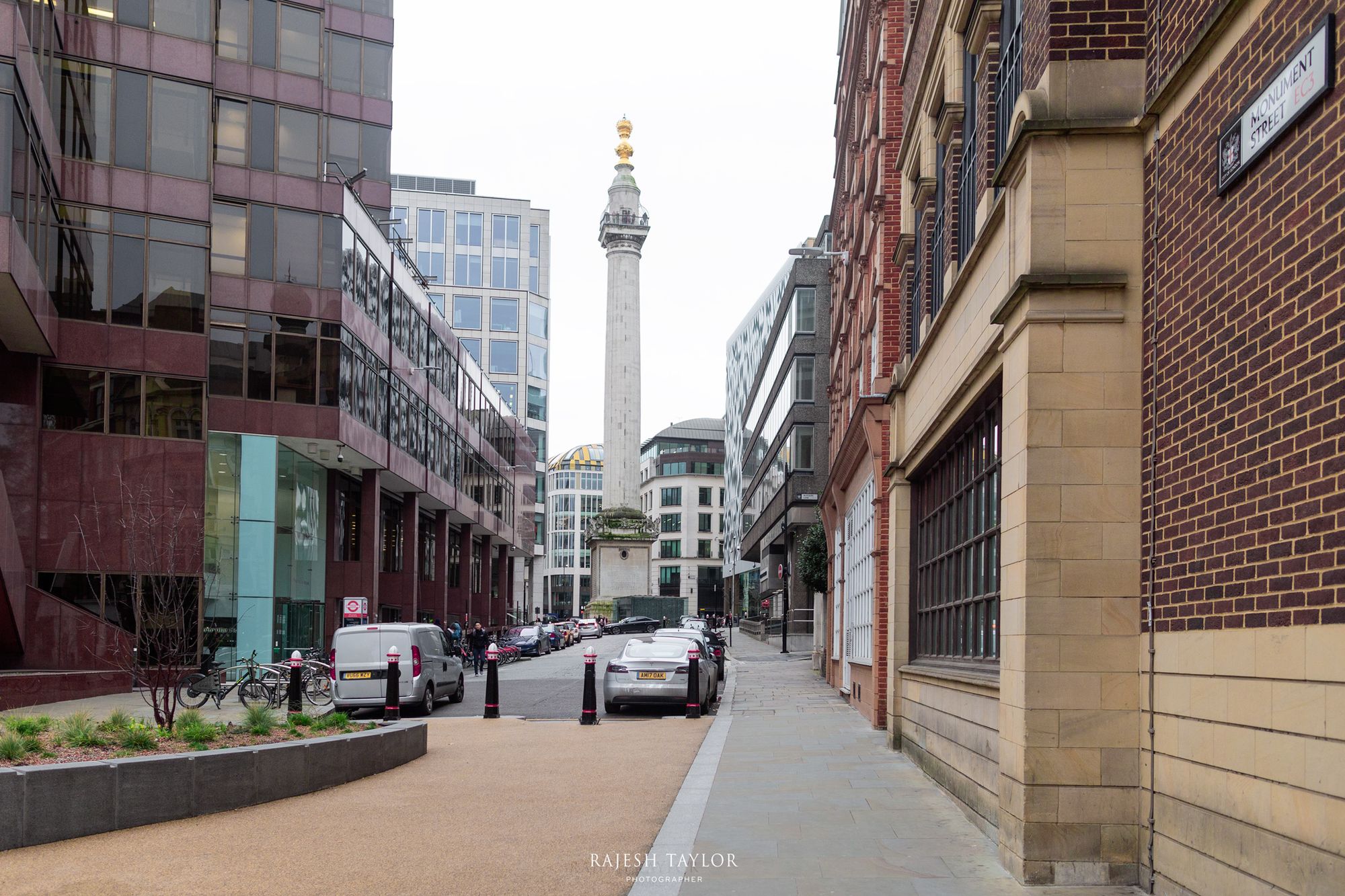
Co-incidence Theory
The Chaos out of Order user manual say fire/war proceeds plagues. The Great Plague in 1665 killed many in the slums and was followed by a period of illness to killing off the remaining (non-military) civilians. Mainly through a lack of clean water, shelter and poor sanitisation. A classic one-two punch.
In another twist of fate – the memorial is reported to have killed more people than the Great Fire. To date, six people have jumped to the death from the top of the Monument. Another has accidentally fallen, making 7 in total. Many historians believe ‘The Great Fire’, killed only 6 people, including the maid at Farriners' bakery who had raised the alarm.
The Monument's height is equal to the distance to the fire's ‘stated’ origin on Pudding Lane.
Sir Christopher Wren Headhunts Sculptor on Day Release
The man behind the carving was Sculptor Caius Gabriel Cibber. Born in Flensburg, Denmark, a town close to the border between Germany, under the name of Sieber. He moved to London in the late 1650s after completing his studies in Italy.
In London, Cibber set up his a workshop and started receiving commissions. In 1668, Cibber became a Freeman of the City – a person who was not the property of a lord – and was free to earn money and own land by redemption – nominated by two existing freemen, of the Worshipful Company of Leathersellers. An ancient Livery, founded by Royal Charter in 1444 with authority to control the sale of leather within city the walls.
However, he was far from careful with money, racking up gambling debts and wasting away his resources. Eventually being detained in prison for unpaid gambling debts.
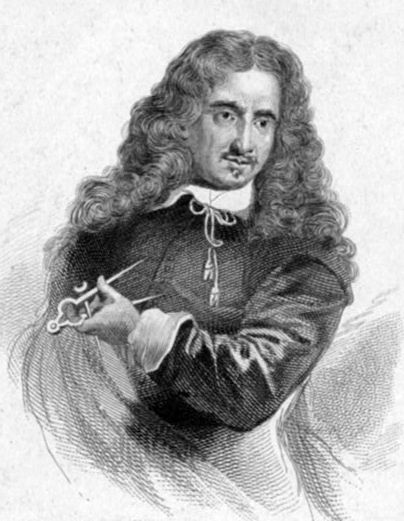
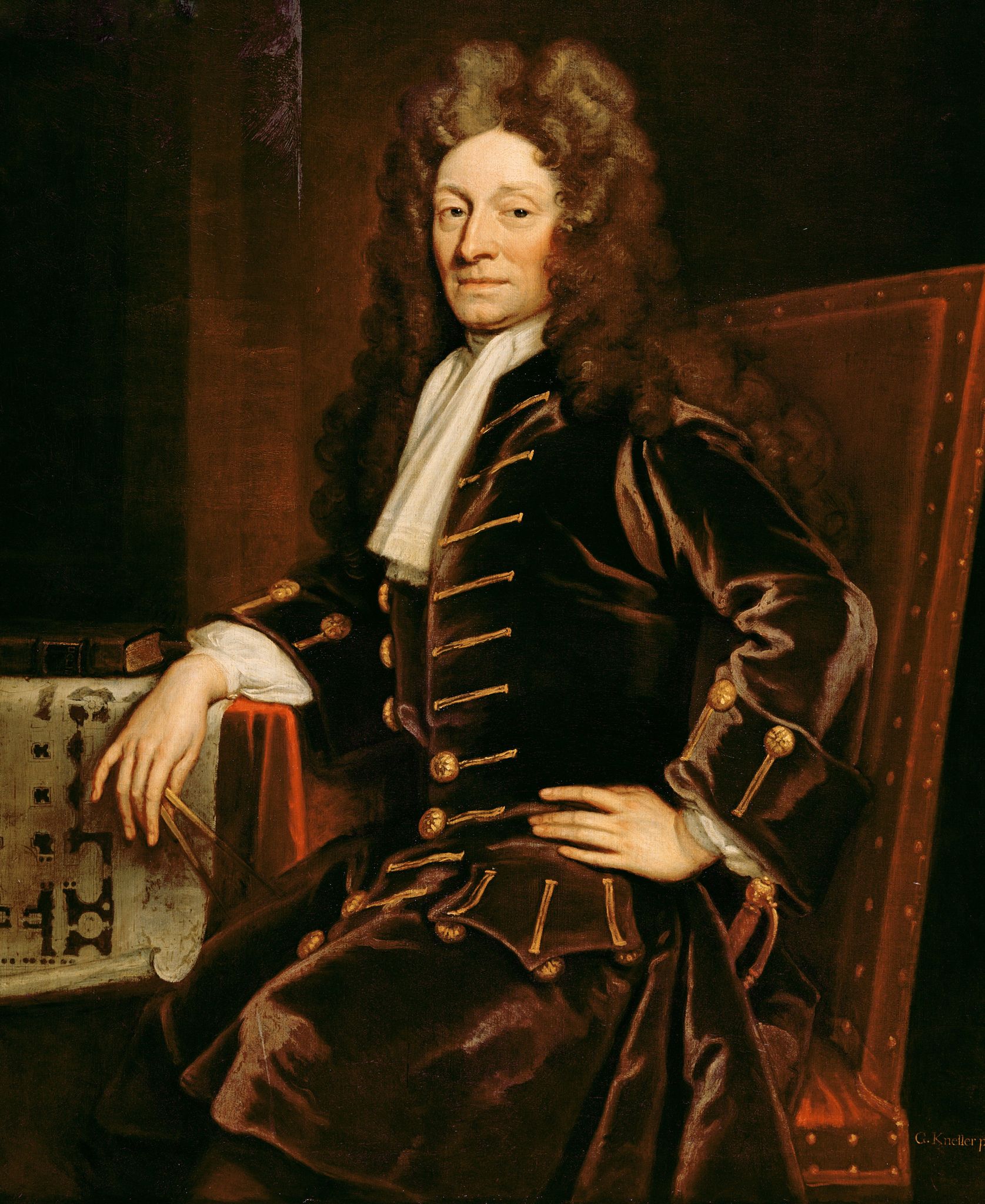
(L) Sculptor Caius Gabriel Cibber (R) Sir Christopher Wren – both with compass and square.
Cibber’s troubled circumstances didn’t prevent him from being sought after. When Wren started to plan The Monument in 1671, he received court permission to employ Cibber. His magnificent work decorates The Monument’s pedestal.
The Monument took six years to complete, with Cibber released during the day to work on its bas-reliefs. Returning to prison at night.
Ciber's Relief
The frieze (or carving) on the west panel of The Monument’s pedestal, facing Fish Street Hill, is one of the most interesting sculptures in the sovereign city state.

Decoding The Monument's Frieze
The frieze is allegorical.
It tells the story of the destruction of London during the Great Fire from left, to its subsequent reconstruction, to its right. Can you see the triangle?

Each character in the relief symbolises different things. From the bottom left corner, on broken masonry holding a sword is a female figure representing the City state. She sits above a dragon – the symbol for the City of London.
Standing behind her with wings is Father Time, helping her back to her feet. He also has the help of Mercury, who represents Industry, himself holding a caduceus, a decorated staff that is the symbol of commerce and negotiation and trade.
On their right hand side, a group of figures are shown walking towards the City of London. The central and most prominent character is King Charles II. He is dressed as a Roman Emperor, standing on a stone platform with a baton of command in his right hand.
He gestures towards the personification of Architecture – who holds a square and compass in her left hand and plans for the new City of London in her right. Illuminati takeover?
Liberty stands behind Architecture, watching and holding her cap, bearing the word Libertas (latin for liberty or freedom), the Roman goddess of liberty.fn She is usually portrayed with two accoutrements: the rod and a pileusfn (latin for hat) which she holds, rather than wears.
A third female figure, to the left of Architecture, represents Imagination. She wears a winged “crown” with little figures on it, like“children of her brain”. These have been interpreted as symbols of fruitfulness and good ideas. She also balances the representation of Nature in her hands, a multi-breasted little statue, which symbolises nature’s abundance.
To the right of King Charles II stands his brother, the Duke of York, the future King James II, apparently “instrumental in putting out the Great Fire”. The laurel wreath he holds represents Victory. Behind them, two more figures: Justice – holding a coronet and Fortitude – holding a lion on a leash.
But what is the strange figure underneath the feet of the group at the bottom right? Envy, gnawing on a heart, literally ‘steaming from her mouth’.
Look closely, there is a lot going on in the background. Shown in faint relief there are several people and buildings in flames. Two scenes depict London on fire and being rebuilt. Hovering in the sky above, watching over the entire scene, we have Plenty and Peace – symbols of hope and recovery after tragedy.
Order out of Chaos
Below Cibbers' work is a wooden board with an updated version of the build. Whilst acknowledging Cibber's work on the sculpture, no mention is given to its masonic numbers.
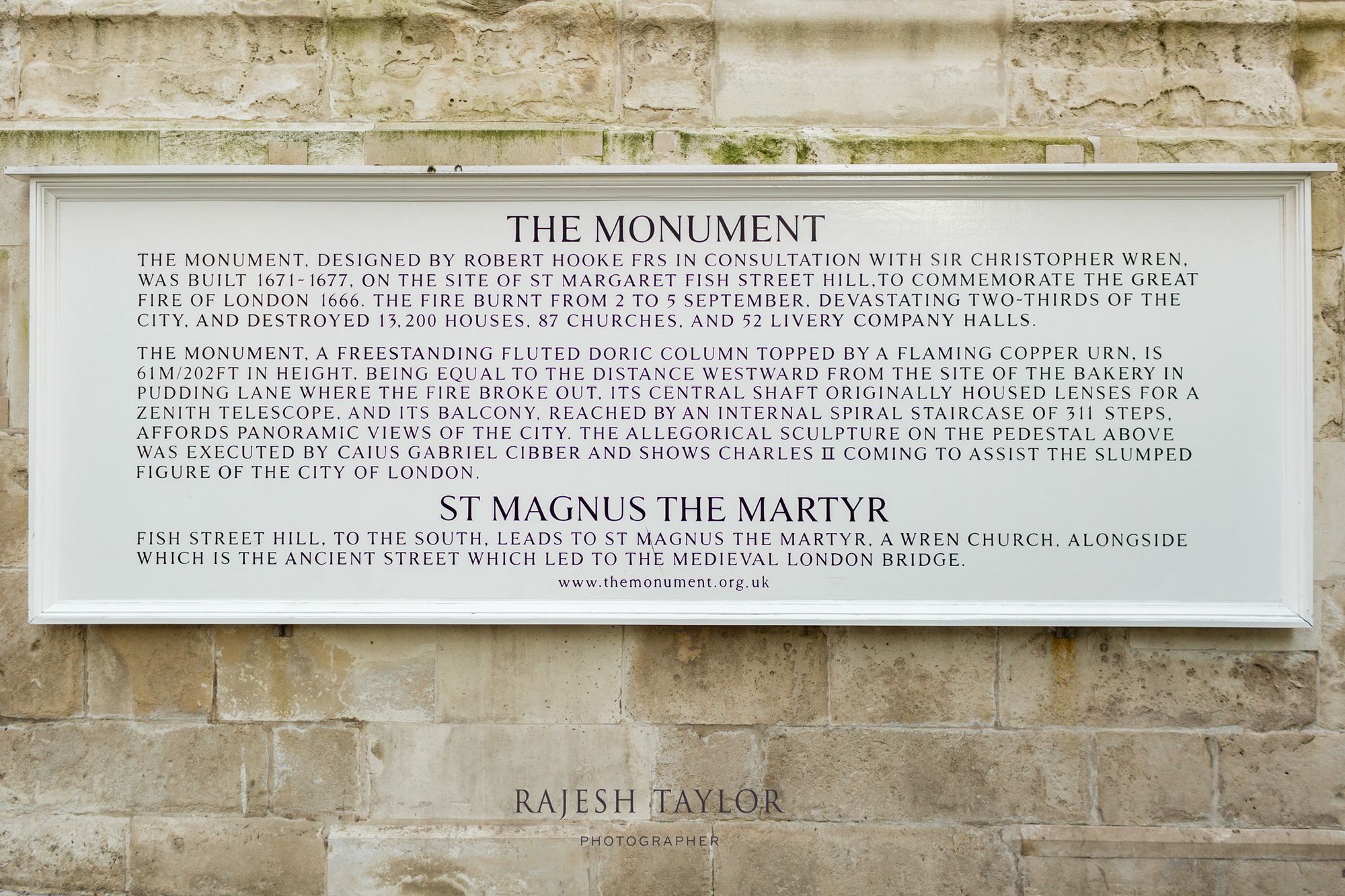
Perhaps the 132,000 Houses, 87 Churches, 52 Livery Company Halls, 311 Spiral Steps are enough clues for those who follow Gemetria?
The Black Cube
On my first encounter, I had assumed it was a modern construction for tickets to visit inside the Monument, perhaps with a few photos and names of prominent people etched on its exterior walls. Oh was I wrong.

It is in fact, a public toilet facility. Useful for schoolkids on field trips.
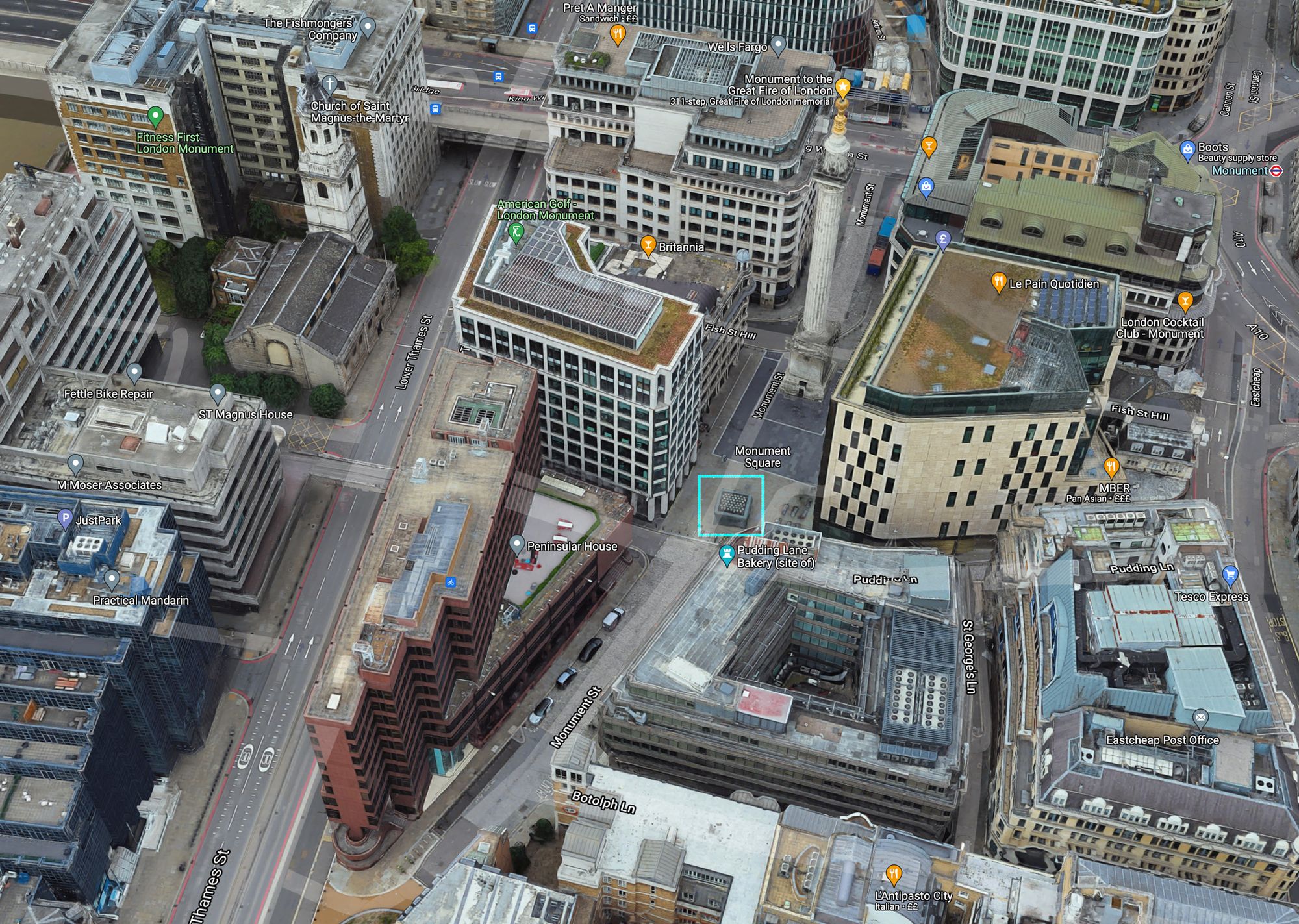
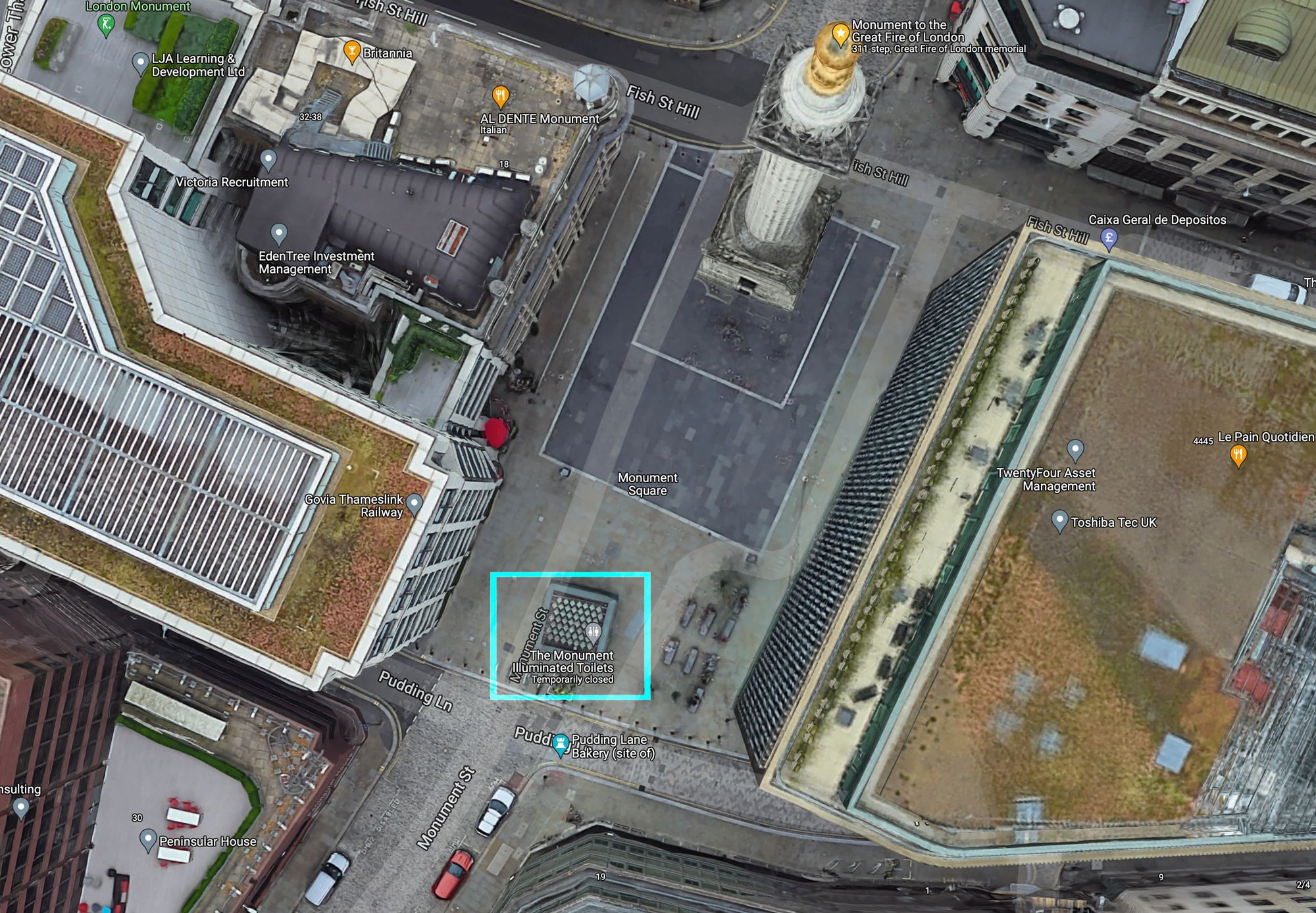
Raven's view of an illuminated black cube next to the Monument Memorial.
Continuing past the black cube on the corner of 25 Monument Street is a plaque commemorating the Great Fire. It reads:
Near this site stood the shop belonging to Thomas Faryner. The Kings Baker in which the Great Fire of September 1666 began.
Presented by the Worshipful Company of Bakers to mark the 500th anniversary of their charter granted by King Henry VII in 1486.
A short trot from the entrance to The Monument, past the red and black bollards to the plaque on the corner of Pudding Lane and Lloyds Banking Group's Mail Room.
Lloyds Banking Group Mail Room
Lloyds “Baking” Group. At Faryners House. Seriously?
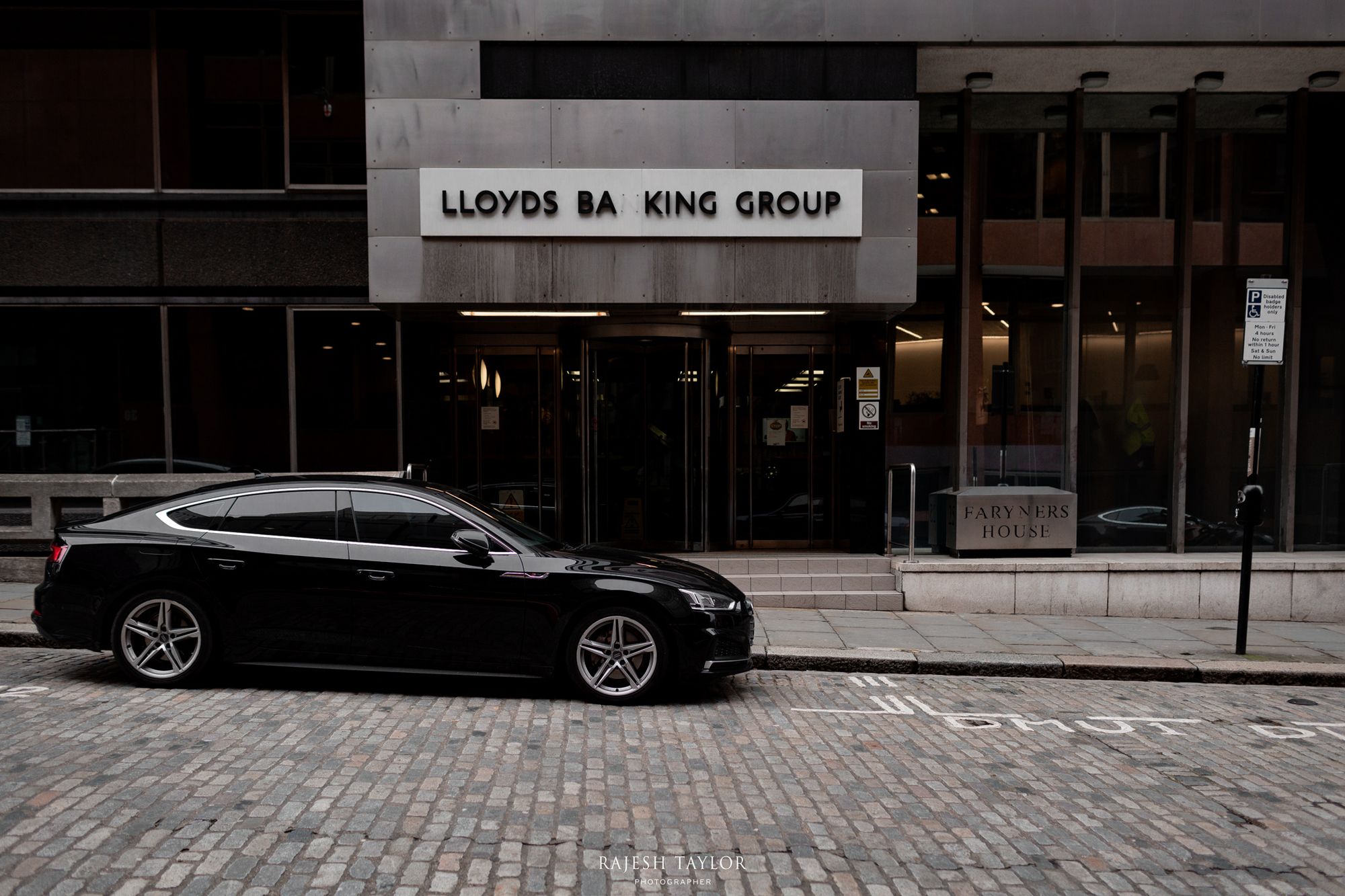
It is sometimes mistaken on smart-maps for the Lloyds of London insurers building. You will be close to The Site of the Scaffold, where executions took place on Tower Hill and a short walk to The Tower of London.
Frequently Asked Questions when Visiting The Monument
Q: What are the nearest Tube and Mainline Rail Stations to The Monument?
A: Monument Tube Station takes its name from the Memorial, on the District and Circle lines. The nearest mainline train station is London Bridge Rail Station. Head north over the River Thames and take the first turn right onto Monument Street. You won't miss it.
Q: How much is a ticket to tour the Monument?
A: At the time of writing:
Adult (16 years+): £5.40
Child (5-15 years): £2.70
Under 5s: Free
Children under 15 must be accompanied by an adult.
Q: Can tickets be purchased in advance?
A: Tickets for The Monument are only available to be purchased on-site on the day. However Tower Bridge + The Monument tickets can be purchased online.
Q: How accessible is the Monument?
A: The Monument has 311 narrow spiralling steps which lead to the top. There is no lift, so not accessible for those in a wheelchair or with mobility difficulties. Be realistic if you are unfit and get short of breath... or heights!
Q: Are personal belongings allowed in the Monument?
A: Small personal belongings like cameras and handbags yes. However, guides will ask that larger bags and backpacks are left at the entrance. As you walk up the spiral staircase, you'll find its wide enough for two people. The viewing platform is also limited in space.
Q: What are the best pubs near The Monument?
A: I would take a short 2 minute walk to Hung Drawn & Quartered Pub. With a good reputation, it serves a wide selection of ales and is halfway between The Monument, The Tower of London and Trinity Square Gardens, where the pub takes its name from the activities that took place on a raised scaffold on the hill.
Closer still, is the Walrus and The Carpenter Pub on 45 Monument Street near Lovatt Lane. The pub takes its name from a Lewis Carroll poem. The verse, famously recited by the characters Tweedledum and Tweedledee in 'Through The Looking Glass', which is the sequel to Alice's Adventures in Wonderland.
Open Monday to Saturday from midday to 11pm.
